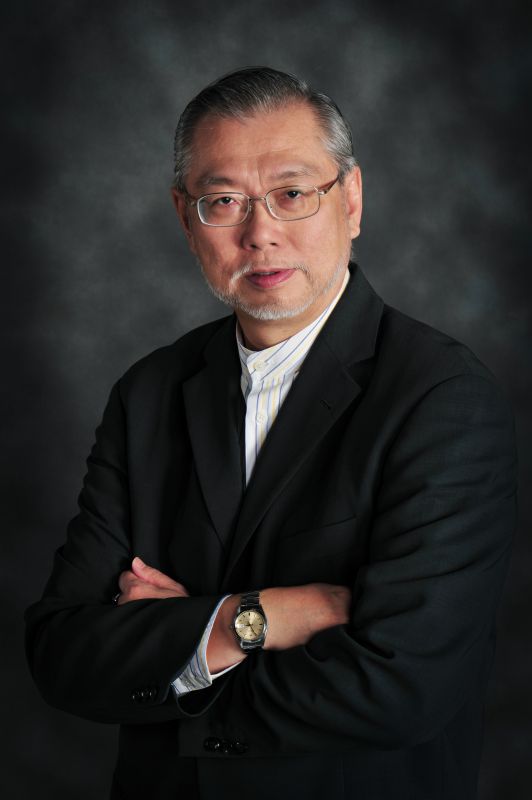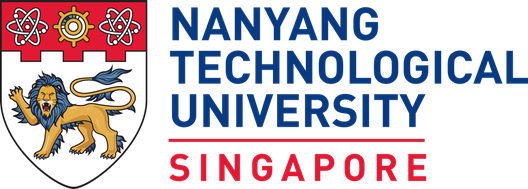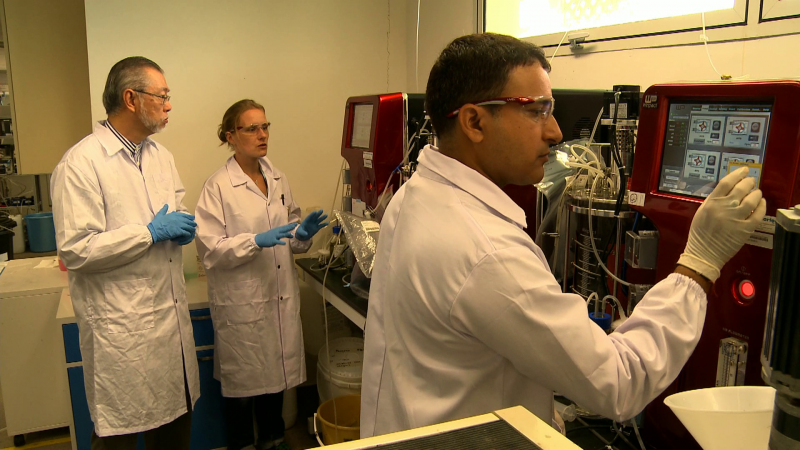In Conversation With: Ng Wun Jern from NEWRI
Published on by Water Network Research, Official research team of The Water Network in Academic
The Water Network team had the pleasure to interview Ng Wun Jern, Executive Director of Nanyang Environment & Water Research Institute, about his interest in technology development for water and wastewater management.
Ng Wun Jern is the Executive Director at the Nanyang Environment & Water Research Institute (NEWRI) and Professor of Environmental Engineering in the School of Civil & Environmental Engineering at Nanyang Technological University.
Ng has an interest in technology development for water and wastewater management and has serially brought R&D to full-scale applications.
Ng has 600 publications including technical papers, books and patents. Aside from his academics pursuits, he has managed a spinoff EPC company specializing in cyclic technologies and was chairman of the board of directors of a major consulting firm in Singapore.
Ng is currently a technical advisor to a number of environmental companies operating in ASEAN, China, and India.
Q1: Thank you for agreeing to talk to us. Would you please tell us about your professional background and about NEWRI?

Ng’s research interests are largely on water and wastewater management with focus on investigations into water quality, treatment science, and development of treatment technologies. These investigations span the water quality spectrum - ranging from ultra-pure water to high strength and potentially inhibitory wastewaters.
He is presently arguing for a more sustainable approach to wastewater treatment through resource, such as energy, recovery.
His research output may be found in some 600 publications. These include journal papers, conference presentations, book chapters and monographs, reports, trade secrets, and patents.
His book publications include “Industrial Wastewater Treatment” (Imperial College Press) and “Wetlands for Tropical Applications” (Imperial College Press). Early IPs commercialized included the aeSBR, anSBR, aeMSBR, Hybridan, and AEPBF (ie wastewater biotreatment systems).
There are some 120 fullscale wastewater biotreatment facilities with his designs. Licensed patents include the deep shaft aerator and flocculator for the oil and gas industry. Ng has founded spin-off companies and is still active in these although he has exited from his first following an industry trade sale and is preparing to exit from his second.
Ng graduated from Queen Mary College, London University with BSc (Civil Engineering) in 1977, Birmingham University with MSc (Water Resources Engineering) in 1978 and thereafter completed his PhD dissertation on chemical regeneration of activated carbon in 1980. He subsequently conducted post-doctoral research on biotreatment systems at Kyoto University, Japan. He is a Fellow at the Singapore Institute of Engineers, a Chartered Engineer, and is a registered professional engineer with the Singapore Professional Engineers Board.
Ng's contributions to industry, research, and education have been recognized with the ASEAN Engineering Award, Outstanding University Researcher Award, and the Chevalier dans l’Ordre des Palmes Academiques. His project on the anaerobic process was placed first in the national innovation competition for environmental technologies in 2004, and in 2008 he was appointed the inaugural Tan Chin Tuan Centennial Professor. In 2012 he was elected to Fellow Singapore Academy of Engineering.
Ng had been Dean of Engineering at the National University of Singapore and in 2013 was appointed Dean, College of Engineering at the Nanyang Technological University. The College is highly ranked globally and arguably one of the largest engineering colleges in the world in terms of student numbers, research activity, and research funding from the industry.

Ng was appointed founding Executive Director at the Nanyang Environment & Water Research Institute in 2007. The institute operates with eight units covering education, research (4 of the units are Centres of Excellence), technology development, and interface with industry and community for applications and commercialization.
The organization carries capabilities and capacities in modeling and visualization (e.g. for environmental impact assessment), membranes (eg for water reclamation, and desalination), biotechnology (e.g. for municipal, industrial, and agro-industrial wastewater bio-treatment systems), chemistry and materials (eg for arsenic removal, and advanced water treatment), and sludge and solid waste management (e.g. for urban waste management and energy recovery).
These are supported by three engineering units which are capable of undertaking projects at fullscale (in membrane fabrication, incineration, and wastewater & sludge management) for engineering development and hence de-risking of technologies developed.
The institute, unusually, carries its own philanthropic unit and this unit implements projects at locations within the geographical zone stretching between China and India. The institute operates its own laboratories and workshops, and has some 400 researchers.
Q2: How did you get interested in water and wastewater management and what is the importance of proper water management?
Water of appropriate quality is not an unlimited resource and yet it is required in substantial quantity for societal and economic development. Constraints in water supply could limit such development. The impact on children and women can be particularly severe.
Interest in water issues developed while I was a University student – drawing inspiration from lectures, seminars and further reading. There was then realization that water resources can be compromised because of pollution arising from unsustainable economic activities – and hence the interest in wastewater management.
Q3: What are, in your opinion, the most promising technologies for water treatment for reuse NWRI is focusing on?
Membranes figure strongly in water reclamation. This had started with the reverse osmosis membrane applied in combination with MF and NF membranes. Recent developments in terms of surface functionalization has made it possible to deploy NF membranes for water reclamation as well.
It should be noted successful membrane applications in water reclamation follows successful wastewater treatment and this is often bioprocess driven. The latter would be required to remove the bulk of the organic pollutants in a stable fashion before the treated water is fed into the membrane system for further treatment.
Q4: Reclaimed water is rarely used for drinking, how do you think we can overcome that?
Consumers need to be educated such water is safe for consumption. Information need to be provided to consumers on the water reclamation process, the quality of the reclaimed water, and how quality assurance is maintained. An effective approach to such information dissemination is to educate the children and to have venues where water reclamation is being practiced - for them to visit and see the process in application.
Q5: What are your efforts in reducing the energy consumption and environmental footprint in (waste)water treatment?
My own work revolves around anaerobic processes – applied to both wastewater and sludge management. Anaerobic processes do not require aeration and this can reduce energy consumption substantially. In addition to this, anaerobic processes can also allow energy recovery through the biogas generated. This helps to reduce the carbon footprint of wastewater and sludge management further.
Q6: How can the microbiology help in wastewater treatment?
Microbiology helps provide understanding of the “actors” (i.e. the bacteria, fungi, and various predators) in the treatment process. This understanding helps address issues such as process failure in face of inhibitory substances, and process optimization for higher efficiencies. It need, however, be noted microbiology in itself is insufficient as there would be need for translation of the understanding to achieve relevance to onsite situations and thereafter development (i.e. the D in R&D) to generate the solution.
Q7: Could you tell us about your research about bioreductive processes?
These would be the anoxic and anaerobic processes and the various reactor configurations developed to accommodate these. Much work has gone into enhancing the three “sub-processes” within anaerobiosis – ie hydrolysis, acidogenesis, and methanogenesis.
Enhancement of these sub-processes enables deployment of faster treatment systems and in the case of anaerobic digestion – higher extent of organic solids conversion to biogas and hence reduction of residual solids in the digestate requiring further sludge management (sludge management is a large component in the overall operating costs of treatment facilities).
The greater extent of sludge solids conversion also releases more NPK into solution and combination of this with phytohormones has resulted in more effective biofertilizers – ie an opportunity to approach more sustainable agriculture.

Q8: How do you expect water management to improve in the following decades?
Improvements shall be driven by increasing realization of the importance of water in societal and economic development, and that water is a finite resource which can be easily compromised by pollution and hence reducing availability further.
This then would drive the need for wastewater management and with discharge limits likely to become increasingly stringent, the case for water reclamation is strengthened (since the treated wastewater is already of such high quality).
Even allowing for water reclamation in combination with raw water resources, water requirements are likely to increase beyond the capacity to meet the demand and so increasing need also for desalination. Functionalized membranes which reverses the present approach of separating pollutants (or salt) from water by size exclusion to attracting water molecules through larger pores shall likely become more prevalent.
The latter would require lower pressures to perform desalination, and hence lowering energy requirements and reducing the cost of fresh water production.
Q9: Finally, do you have a take-home message to our readers?
The water situation going forward is both exciting and worrying. It is exciting because the need for protecting our water resources, enhanced treatment methods for marginal waters and more difficult wastewaters, conservation, reclamation, and desalination shall likely grow.
This shall drive research requirements and so offers tremendous opportunities for researchers to participate. It is, however, also worrying because the water space has often seen very long gestation periods for research to transit through translation, development, and finally to deployment.
This coherent value chain of research, engineering, and deployment shall need to be consciously and conscientiously performed, and its pace quickened so that more viable solutions may be brought to bear on the unfolding water issues.
Read More Interviews from the 'In Conversation With' Series
by The Water Network
Media
Taxonomy
- Anaerobic Digestion
- Reclaimed Wastewater
- Water Reuse & Recycling
- Waste Water Treatments
- Wastewater Treatment
- Industrial Water Reuse
- Research
- Microbiology
- Integrated Water Management
- Reuse
- Water Management
- Water Resources Management
- Water microbiology
- Waste Water Treatment
3 Comments
-
thank you astounding person Ng Wun Jern and interviewer team
If possible, please keep the following question in future
1. How to make easy the way accordingly the current situation in Water or Wastewater Engineering or science?
2. What are the advices for new researcher for same area of interest?
-
Dear Wun Jern. Excellent and timely interview. Good you see that you are still pushing the envelope at NEWRI.
Regarding sustainability, water reuse at all levels is the best available approach to cope with increased population and consumption. It is also cheaper than desalination. It helps to insulate a community from the natural weather cycles. The soon to be released at SIWW WHO reuse guidelines should help as a rational guidance for potential users.
Best regards,
Joe Cotruvo
-
Thank you for this important series of knowlegde